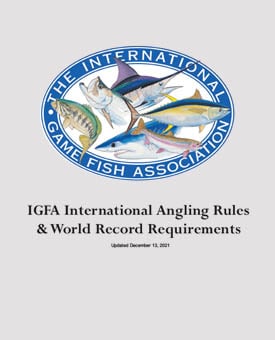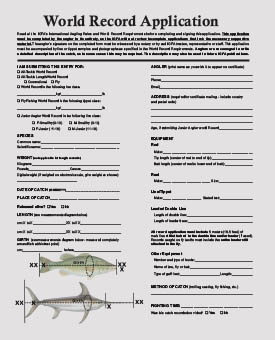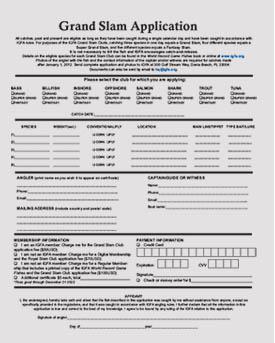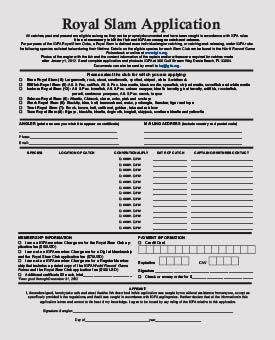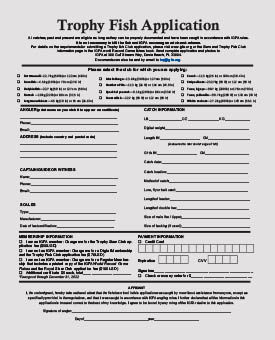Changes to IGFA World Record Requirements
The IGFA recently announced two new changes to the IGFA World Record Requirements that are effective immediately.
1) Tying an Angler's Own Record for Weight and Length Records

Weight Records
The first of these changes is an adjustment to the current language regarding ties, specifically an angler tying their own record. The current language regarding ties, as listed under the “Weights needed to defeat or tie records” section of the requirements. Under Section 3, the current language reads:
A catch that matches the weight of an existing record or exceeds the weight by less than the amount required to defeat the record will be considered a tie. In the case of a tie claim involving more than two catches, the weight must be compared with the original record (i.e., the first fish caught). No catch weighing less than the original record will be considered.
Additional language has now been added to address the event of an angler tying their own record:
A catch that matches the weight of an existing record or exceeds the weight by less than the amount required to defeat the record will be considered a tie. In the case of a tie claim involving more than two catches, the weight must be compared with the original record (i.e., the first fish caught). No catch weighing less than the original record will be considered. In the event of an angler tying an existing record they currently hold; the catch must weigh at least 28.35 grams (1 ounce) greater than their current record to qualify for a tie.
All-Tackle Length Records
Similar language has also been added to the “Minimum length requirements needed to defeat or tie existing records” section of the All-Tackle Length Category Rules. Under Section 2, the current language reads:
A catch that matches the length of an existing record or exceeds the length by less than two centimeters will be considered a tie. In the case of a tie claim involving more than two catchers, length must be compared with the original record (first fish to be caught). Nothing measuring less than the original record will be considered.
Additional language has now been added to address the event of an angler tying their own record:
A catch that matches the length of an existing record or exceeds the length by less than two centimeters will be considered a tie. In the case of a tie claim involving more than two catches, length must be compared with the original record (first fish to be caught). Nothing measuring less than the original record will be considered. In the event of an angler tying an existing record they currently hold; the catch must measure at least one centimeter greater than their current record to qualify for a tie.
2) Removing the Requirement of a Notary

The second change to the IGFA World Record Requirements is regarding the longstanding requirement that an IGFA World Record Application be notarized prior to submission. In locations where notarization was not possible or customary, IGFA has allowed government officials, members of an embassy, or an IGFA Representative to sign in place of the notary. However, the recently created online application portal does not require a notarization to apply.
To create a standard application process between the online and physical application process, the IGFA removed the requirement of a notary from the physical copy of our World Record application. While the notary has been removed you are still required to sign and date the Affidavit on all World Record application forms. The notary requirement has been removed from all Slam and Trophy Club Applications as well. Like the World Record application process, these application forms will still require the angler to sign and date the Affidavit.

